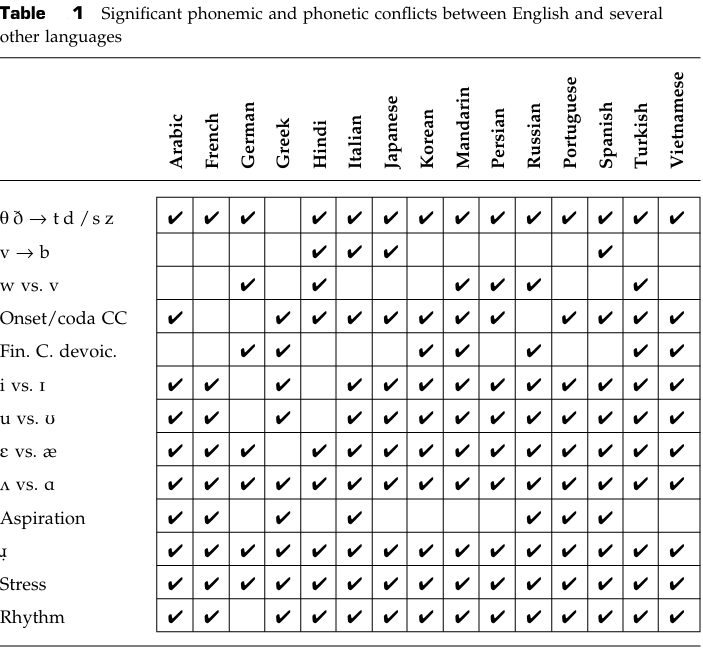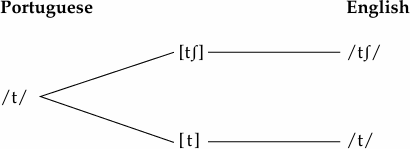


 Grammar
Grammar
 Tenses
Tenses
 Present
Present
 Past
Past
 Future
Future
 Parts Of Speech
Parts Of Speech
 Nouns
Nouns
 Verbs
Verbs
 Adverbs
Adverbs
 Adjectives
Adjectives
 Pronouns
Pronouns
 Pre Position
Pre Position
 Preposition by function
Preposition by function 
 Preposition by construction
Preposition by construction
 Conjunctions
Conjunctions
 Interjections
Interjections
 Grammar Rules
Grammar Rules
 Linguistics
Linguistics
 Semantics
Semantics
 Pragmatics
Pragmatics
 Reading Comprehension
Reading Comprehension|
Read More
Date: 24-3-2022
Date: 2024-03-04
Date: 2024-03-11
|
Differential Treatment of Mismatches
We observed, besides many phonetic mismatches, several examples of phonemic mismatches between a learner’s L1 and L2. Although the difficulties resulting from these mismatches are real, there seem to be differences in quality among them, and consequently, degrees of difficulty created by different types of mismatches.
One type of phonemic mismatch between two systems was a result of a situation in which the two sounds that were in contrast in L2 were non-existent in L1. This was exemplified by the /θ/ – /ð/ contrast of English (e.g. ether [iθɚ] vs. either [iðɚ]). As we saw above, many languages, including Arabic, French, German, Korean, Turkish, Persian, Portuguese, and Russian, lack these completely, and the likely substitutions created violations of target contrasts.
The second mismatch that resulted in phonemic violations occurred when two sounds that were in contrast in L2 were present as the allophones of a single phoneme in L1.

As mentioned earlier, the English contrast between /t/ and /tʃ/ (e.g. tip [tɪp] vs. chip [tʃɪp]) is under-differentiated by learners whose L1 is Portuguese, because the two sounds are allophones of the same phoneme in their L1, as shown in the following:

The first situation involves acquiring new phoneme(s), and the second type is a creation of a phonemic split from an existing allophonic variation in the native language. While one may be inclined to think that acquiring new phoneme(s) will be more difficult than rearranging the two existing sounds from allophones of the same phoneme to separate phonemes, research has proven otherwise. It has been shown that learning becomes more difficult when the structures or sounds are similar in L1 and L2 than when they are dissimilar (Oller and Ziahosseyni 1970; Flege 1987, 1990; Major and Kim 1999).
|
|
|
|
دخلت غرفة فنسيت ماذا تريد من داخلها.. خبير يفسر الحالة
|
|
|
|
|
|
|
ثورة طبية.. ابتكار أصغر جهاز لتنظيم ضربات القلب في العالم
|
|
|
|
|
|
|
قسم شؤون المعارف ووفد من جامعة البصرة يبحثان سبل تعزيز التعاون المشترك
|
|
|